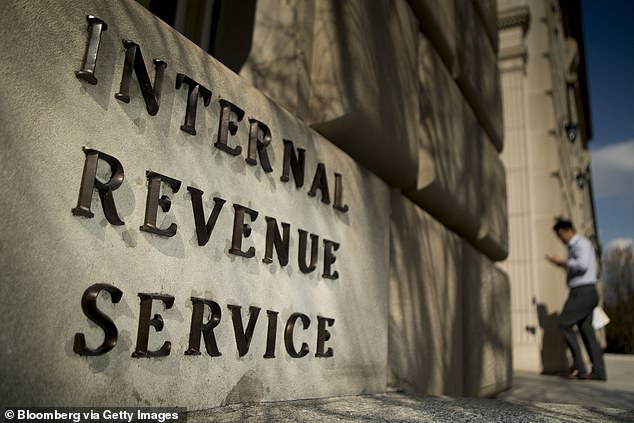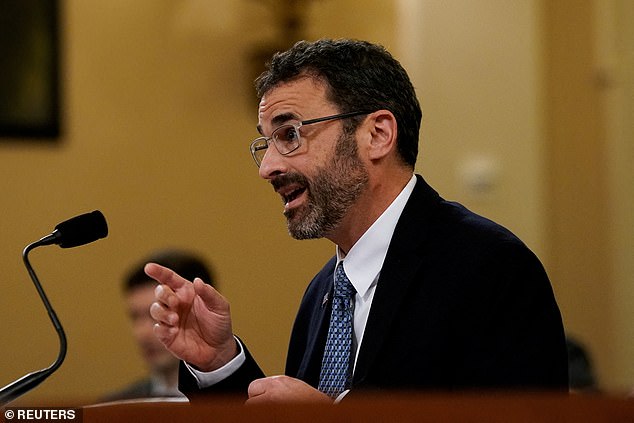Astonishing reason only a third of callers get through to IRS revealed in bombshell report exposing agency’s failings
An analysis by DailyMail.com found that IRS employees sat idle for an hour each workday during this year’s tax filing season.
The staggering waste of labour is due to decades-old technology that is causing double the problems, a shocking report has found.
Calls are not routed efficiently to employees, leaving them often ‘waiting for the phone to ring’ during the tax season (January 29 to April 15).
Additionally, outdated systems leave employees unable to assist taxpayers — for example, by reviewing paperwork or answering emails — while they wait for a phone call.
According to experts, this explains why this year only 31 percent of people who tried to contact the agency did not get through to anyone at all.
DailyMail.com has delved into a devastating new report by the National Taxpayer Advocate, a watchdog for the IRS.
Customer service agents waited 1.1 million hours for calls during this year’s seven-week tax season, it found.
The latest figures show that the IRS has approximately 20,000 customer service representatives.
According to calculations by DailyMail.com, this means that each of them lost an average of 55 hours this year, which equates to just under seven eight-hour working days.
And the impact of these lost working hours is felt hard by the taxpayer.
The IRS has long been plagued by allegations of poor customer service.
Taxpayers who wish to contact the agency can generally do so by telephone or mail.
During the Covid-19 pandemic, the organisation’s reputation hit rock bottom, becoming notorious for making it nearly impossible for taxpayers to reach out and get help.
The 1.1 million hours lost this tax season represent “nonproductive employee time that could have been spent processing tax correspondence and amended returns,” according to the Taxpayer Advocate Service.
Customer service representatives either answer the phone or process taxpayer correspondence. But they can’t do both.
Even though the number of calls is low, employees are still on the phone.
It is clear that this is because the agency’s systems are outdated, making it difficult for employees to switch between the two tasks.
Much of the IRS’s correspondence still goes through the mail, requiring employees to sift through piles of tax paperwork.
The IRS has about 60 different case management systems that don’t communicate with each other. Sometimes, employees have to open three or four systems to answer a question.
To achieve higher levels of telephone service, the IRS must staff its phone lines to ensure there are enough personnel to handle calls during peak times, the report said.
But that means that when things are quieter, reps are “waiting for the phone to ring.”
It’s not a new problem. During the 2023 tax season, workers spent 1.27 million — or 34 percent — of their time waiting to answer the phone.
While this year marks a slight improvement on these figures, the percentage of overdue tax correspondence not processed within the normal timeframe has increased in 2024.
By the end of the 2024 tax season, 66 percent of the 6.8 million pieces of tax correspondence were filed late, compared to 61 percent the year before.
“Going forward, the IRS must rebalance its workflow and find a way to allow employees to move more quickly between answering the phone and processing paperwork,” the Taxpayer Advocate Service said.

IRS employees sat idle for an hour every workday, report says

The IRS lost 55 hours of work per customer service representative this tax season because of its “inefficient” systems, an analysis by DailyMail.com found

This tax season, only 31 percent of people successfully reached a human being when they called the agency for help

The IRS is under fire for long wait times (Photo: IRS Commissioner Danny Werfel)
The IRS received 40 million calls this year during tax season, which ran from Jan. 29 through April 15.
But only 12.4 million were collected by an IRS employee, down from the year before.
These calls are aimed at people facing serious problems, such as eviction due to tax debts.
While the agency has hired 7,000 additional customer service agents since the height of the pandemic, that has done little to ease the overloaded phone lines, the Taxpayer Advocate Service said.
The IRS said in a statement that it does not agree with all of the methodology in the report, but that the telephone service has improved.
